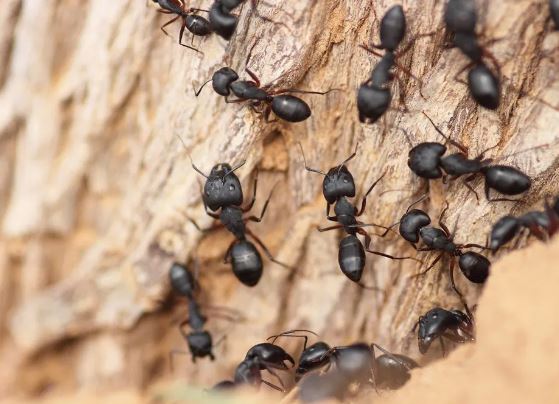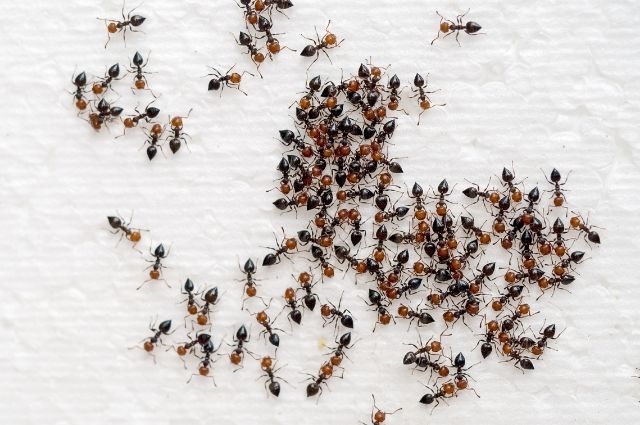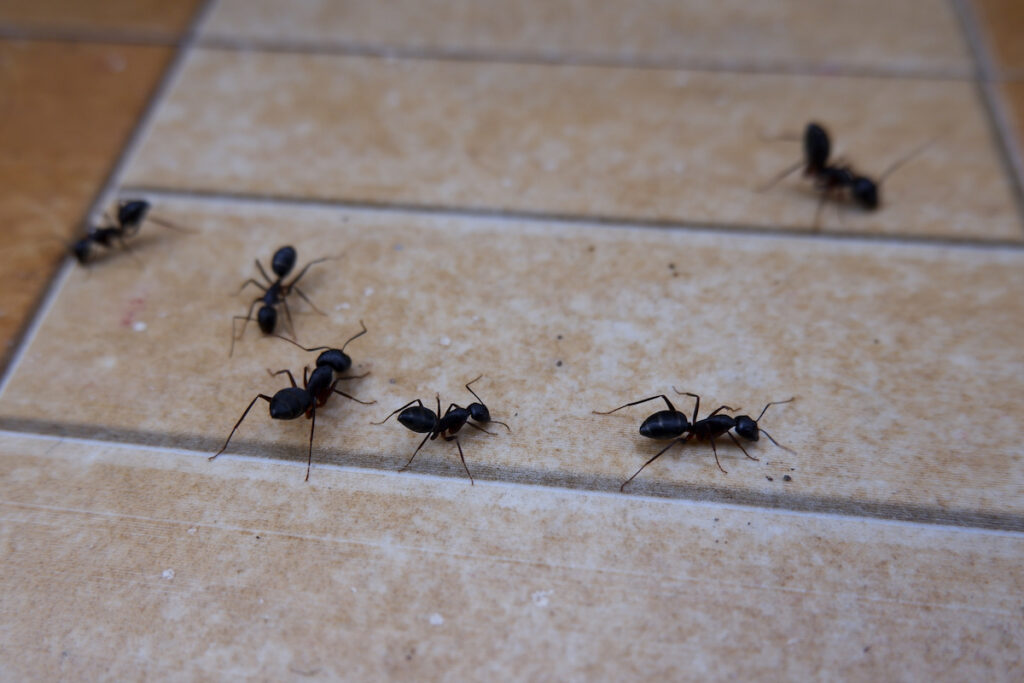ANT PEST CONTROL & FUMIGATION



Bugs n Roaches provide the ultimate solution and Ant Pest Control Services to get rid of Ant Invasions from their source ensuring 100% removal.
We have various types of Ant pest control services for all types of Colonies. Contact us today and get one of our QUALIFIED technicians to valuate the problem and advise on the best steps forward in getting rid of Ants once and for all, while also informing you on tips on how to prevent them from returning.
Appearance:
- Workers 4-5mm long.
- Queens 15mm long.
- Dark brown-black in colour.
- 1 small segment at waist point (pedicel).
- No sting present.
Lifecycle:
- Queens over winter in soil. The eggs are laid in late spring and the larvae hatch 3–4 weeks later.
- Larvae feed on secretions from the queen’s salivary glands until the first worker ants emerge.
- Worker ants continue with larval care, nest building and food foraging.
- Fertile males are produced later in the season.
Habits :
- Foraging worker ants follow well–defined trails around food sources. Sweet foods are preferred but high protein foods will also be taken.
- Swarming characteristics – mating between queens and fertile males takes place on the wing during late summer and the males perish after mating.
- Nest locations – often outdoors in soil and below paving slabs on the sunny side of buildings. Nest locations can be identified by the presence of finely powdered soil around nest exit holes.
Appearance:
- Workers 1.5–2mm long, yellow–brown with brown abdomen.
- Males 3mm long, black and winged.
- Queens 3.5–6mm long, dark red in colour with wings.
- Black eyes. 2 small segments at the pedicel.
Lifecycle:
- Multi–queen colonies.
- Swarming can take place at any time of the year.
- Winged adults seldom fly so rarely seen. Wings are soon lost after mating.
Habits :
- Well–defined trails are laid which are often associated with heating systems. Feeds indoors on high protein foods — meat, fats, blood, dead insects, etc.
- Swarming characteristics — new colonies are often formed through nests that have been disturbed e.g., as a result of insecticide spray treatments. Each queen produces up to 3500 eggs in its lifetime.
- Nest locations — deep seated in cavities in heated buildings. Often found in hospitals. Associated with humid conditions. Colonies can range from a few dozen to 300,000 individuals.
WHY USE BUGS N ROACHES?
- Certified Experts
- Quality Services ALWAYS
- 100% Safe for Kids and Pets
- Environment Friendly
- Affordable
- Effective Treatment
- Totally odourless and safe
